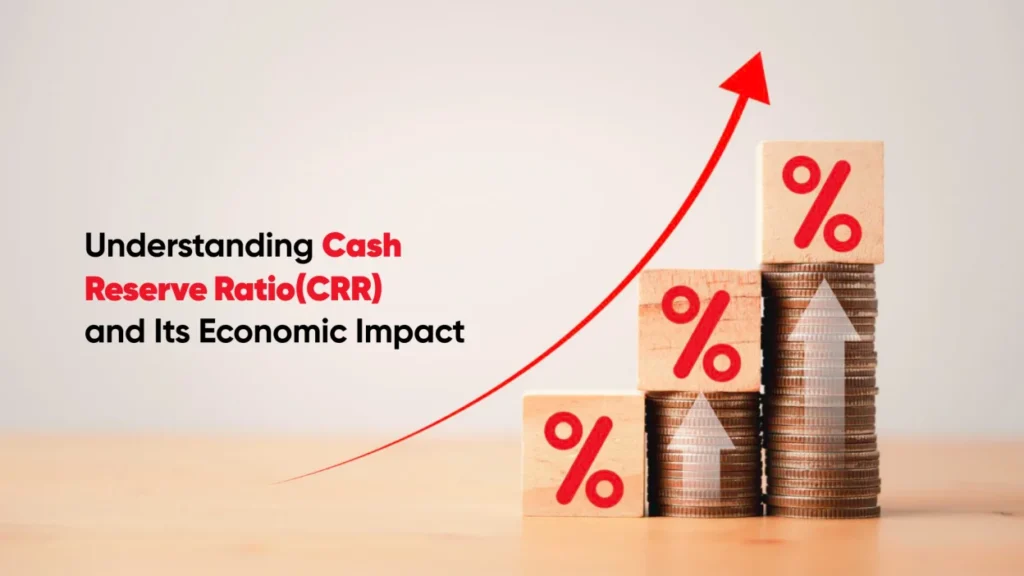
Lowering the Cash Reserve Ratio (CRR) allows banks to lend more money, fueling economic growth by increasing liquidity, stimulating investment, and promoting job creation. However, it requires a balanced approach to avoid inflation and financial instability.
What is the Cash Reserve Ratio (CRR)?
The Cash Reserve Ratio (CRR) is the portion of a bank’s total deposits that it must keep as reserves with the central bank. These reserves are held in cash or equivalent liquid assets and are not available for lending. The CRR is a critical tool used by central banks worldwide to regulate the liquidity in the banking system and ensure financial stability.
For example, if a bank has $1 billion in deposits and the CRR is 4%, it must hold $40 million with the central bank. This reserve ensures that banks maintain a buffer to meet withdrawal demands and limits the amount of money available for lending.
How Does Lowering the CRR Work?
Lowering the CRR means banks are required to keep a smaller portion of their deposits as reserves with the central bank. This change releases additional funds that banks can use to issue loans, support businesses, and promote economic activity.
Here’s how the mechanism works:
- Increased Liquidity: By reducing the CRR, central banks inject liquidity into the banking system. Banks have more cash at their disposal to lend.
- Credit Expansion: With more funds available, banks can approve more loans for businesses and consumers, stimulating economic activity.
- Reduced Interest Rates: Increased liquidity often leads to competitive interest rates, making borrowing more affordable for individuals and businesses.
The Impact on Bank Lending
Lowering the CRR directly affects the lending capacity of banks. Here’s a closer look at how this works:
1. Enhanced Lending Capacity
When the central bank lowers the CRR, it increases the funds banks have for lending. These loans can support:
- Small and Medium Enterprises (SMEs): Businesses can access credit to expand operations, hire staff, and innovate.
- Consumer Spending: Individuals can afford homes, cars, and other big-ticket items, driving demand in the economy.
2. Boost to Economic Growth
Increased lending supports economic growth through:
- Investment in Infrastructure: Governments and corporations can fund large-scale projects.
- Job Creation: Businesses use loans to expand and hire more workers, reducing unemployment.
3. Competitive Interest Rates
Lower CRRs often lead to reduced borrowing costs, as banks compete to attract borrowers. Affordable loans encourage investment, boosting economic growth.
Real-World Examples of CRR Adjustments
India: Strategic Reduction
In December 2024, the Reserve Bank of India (RBI) reduced the CRR by 50 basis points, injecting liquidity into the banking system. This move aimed to counter economic slowdown and encourage banks to lower lending rates. The expected outcome was increased consumer spending and business investment, crucial for revitalizing the economy.
China: Economic Stimulus
In response to stagnation, China’s central bank reduced the reserve ratio by 0.5 percentage points in 2024. This move injected 1 trillion yuan into the banking system, promoting economic activity and achieving growth targets.
Ghana: Balancing Inflation
In 2023, Ghana increased the CRR to combat inflation. While this reduced liquidity in the short term, it stabilized the economy by curbing excessive credit growth.
The Role of CRR in Monetary Policy
The CRR is one of several tools central banks use to manage the economy. Other tools include:
- Open Market Operations: Buying or selling government securities to influence liquidity.
- Repo Rates: Interest rates at which banks borrow from the central bank.
- Quantitative Easing: Injecting money directly into the economy.
Central banks adjust the CRR based on economic conditions. A lower CRR can stimulate growth during a downturn, while a higher CRR can help cool an overheated economy.
Balancing Risks and Rewards
While lowering the CRR can unlock significant economic benefits, it also comes with potential risks:
- Inflationary Pressure: Increased money supply can lead to higher inflation if not matched by a corresponding rise in production.
- Asset Bubbles: Excessive lending may inflate asset prices, such as real estate or stocks, leading to financial instability.
- Non-Performing Loans (NPLs): Rapid credit growth can lead to lower lending standards, increasing the risk of default.
To mitigate these risks, central banks often combine CRR adjustments with other measures, such as tighter credit monitoring and fiscal policies.
Read: What Are Intestacy Laws?
Global Perspectives on CRR Adjustments
United States
The Federal Reserve does not rely heavily on reserve requirements. Instead, it uses tools like the federal funds rate and open market operations to regulate liquidity.
European Union
European central banks focus on targeted long-term refinancing operations (TLTROs) to provide liquidity, reducing reliance on CRR adjustments.
Emerging Economies
Countries like India, China, and Kenya frequently adjust the CRR to address specific economic challenges, such as inflation or liquidity shortages.
The Future of CRR Policies
As economies become more complex, the role of the CRR evolves. Technological advancements, such as digital currencies, may reduce the reliance on traditional monetary policy tools. However, the CRR remains a vital mechanism for managing liquidity and ensuring financial stability.
Lowering the Cash Reserve Ratio is a powerful tool for unlocking new loans and stimulating economic growth. By increasing liquidity, reducing interest rates, and promoting investment, CRR adjustments can transform economies. However, they must be carefully calibrated to balance growth with stability, ensuring long-term benefits without triggering inflation or financial instability.
FAQs
What is the Cash Reserve Ratio (CRR)?
The Cash Reserve Ratio (CRR) is the percentage of a bank’s total deposits that must be kept as reserves with the central bank. These reserves are not available for lending or investment.
How does lowering the CRR impact banks?
Lowering the CRR increases the amount of money banks have available for lending. This allows banks to issue more loans to businesses and individuals, boosting economic activity.
How does the CRR influence the economy?
The CRR controls the liquidity in the banking system. A lower CRR increases liquidity, promotes credit expansion, reduces borrowing costs, and stimulates economic growth. Conversely, a higher CRR reduces liquidity and controls inflation.
Can lowering the CRR cause inflation?
Yes, lowering the CRR can lead to inflation if the increased money supply is not matched by a rise in production. Excess liquidity can drive up demand, leading to higher prices.
What are the risks of lowering the CRR?
The risks include:
- Inflationary pressures due to excess money supply.
- Asset bubbles from increased borrowing and investment.
- Non-Performing Loans (NPLs) if banks lower their lending standards to accommodate higher credit growth.
How does the CRR differ across countries?
CRR requirements vary depending on a country’s monetary policy. For example:
- United States: The Federal Reserve relies more on interest rates than CRR adjustments.
- India and China: These countries use CRR adjustments as a key tool to manage liquidity and economic growth.
- European Union: CRR is less emphasized, with tools like targeted refinancing operations taking precedence.
What alternatives exist to CRR adjustments?
Alternatives to CRR adjustments include:
- Open Market Operations: Buying or selling government securities to regulate liquidity.
- Repo Rates: Adjusting the interest rates at which banks borrow from the central bank.
- Quantitative Easing: Injecting money directly into the economy to stimulate growth.
Can the CRR affect interest rates?
Yes, lowering the CRR increases liquidity in the banking system, often leading to reduced interest rates. This makes borrowing cheaper for businesses and individuals.
How is CRR different from the Statutory Liquidity Ratio (SLR)?
While the CRR refers to reserves kept with the central bank, the Statutory Liquidity Ratio (SLR) mandates banks to maintain a specific percentage of their deposits in liquid assets like government bonds, cash, or gold.
What are recent examples of CRR adjustments?
- India: In December 2024, the Reserve Bank of India reduced the CRR to boost liquidity and counter economic slowdown.
- China: In 2024, a reduction in the CRR injected 1 trillion yuan into the banking system to stimulate growth.
Who decides the CRR in a country?
The central bank of a country determines the CRR. For example:
- United States: The Federal Reserve.
- India: The Reserve Bank of India (RBI).
- Kenya: The Central Bank of Kenya (CBK).
How does the CRR affect small businesses?
Lowering the CRR benefits small businesses by increasing their access to affordable loans. This enables them to expand operations, hire staff, and invest in innovation.





